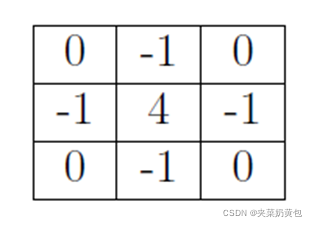目录
一:阈值
阈值:把图像分割的标尺
阈值类型:





API

代码
#include<opencv2/opencv.hpp>
#include<iostream>
#include<math.h>
using namespace cv;
Mat src, dst, dst1;
int threshold_value = 127;
int threshold_max = 255;
int type = 2;
int type_max =4;
char result[] = "threshold image";
//或者定义一个指针形式:const char* result="threshold image";
void threshold_Demo(int, void*);
int main(int argc, int argv)
{
src = imread("D:/opencvtu/1.jpg");
if (!src.data)
{
printf("could not load image...\n");
return -1;
}
else
{
printf("ok....");
}
namedWindow("input", CV_WINDOW_AUTOSIZE);
imshow("input", src);
namedWindow(result, CV_WINDOW_AUTOSIZE);
createTrackbar("threshold value:", result, &threshold_value, threshold_max, threshold_Demo);
createTrackbar("threshold type:", result, &type, type_max, threshold_Demo);
threshold_Demo(0, 0);
waitKey(0);
return 0;
}
//阈值化实现函数
void threshold_Demo(int, void*)
{
cvtColor(src, dst, CV_BGR2GRAY);
imshow("GRAY", dst);
threshold(dst, dst1, threshold_value, threshold_max, type);
imshow(result, dst1);
}效果:
二:自定义线性滤波
1.定义
卷积是图像处理中一个操作,是kernel在图像的每个像素上的操作。
Kernel本质上一个固定大小的矩阵数组,其中心点称为锚点(anchor point);
把kernel放到像素数组之上,求锚点周围覆盖的像素乘积之和(包括锚点),用来替换锚点覆盖下像素点值称为卷积处理。数学表达如下:

2.常见算子
Robert算子

Sobel算子

拉普拉斯算子
3.自定义卷积模糊
filter2D方法filter2D(
Mat src, //输入图像
Mat dst, // 模糊图像
int depth, // 图像深度32/8
Mat kernel, // 卷积核/模板
Point anchor, // 锚点位置
double delta // 计算出来的像素+delta
)
其中 kernel是可以自定义的卷积核
代码
#include<opencv2/opencv.hpp>
#include<iostream>
#include<math.h>
using namespace cv;
Mat src, dst;
int main(int argc, int argv)
{
src = imread("D:/opencvtu/1.jpg");
if (!src.data)
{printf("could not load image...\n");
return -1;}
else
{printf("ok....");}
namedWindow("input", CV_WINDOW_AUTOSIZE);
imshow("input", src);
//namedWindow("output_x", CV_WINDOW_AUTOSIZE);
//namedWindow("output_y", CV_WINDOW_AUTOSIZE);
//卷积:kernel在图像的每个像素上的操作
//kernel是一个固定大小的矩阵数组,中心点=锚点;求锚点周围覆盖的像素乘积之和
//替换锚点覆盖下的像素点值;
/*x方向*/
//Mat kernel = (Mat_<int>(3,3) << -1,0,1,-2,0,2,-1,0,1);//算子
//filter2D(src, dst, -1, kernel,Point(-1, -1), 0.0);
//imshow("output_x", dst);
y
//Mat kernel2 = (Mat_<int>(2, 2) << 0,1,-1,0);//算子
//filter2D(src, dst1, -1, kernel2, Point(-1, -1), 0.0);
//imshow("output_y", dst1);
int c = 0;
int index = 0;
int ksize = 0;
while (true)
{
c = waitKey(500);
if ((char)c == 27) // ESC
{
break;
}
ksize = 5 + (index % 8) * 2;
Mat kernel = Mat::ones(Size(ksize, ksize), CV_32F) / (float)(ksize * ksize);
filter2D(src, dst, -1, kernel, Point(-1, -1));
index++;
imshow("output", dst);
}
return 0;
}
效果:
三:处理边缘
图像卷积的时候边界像素,不能被卷积操作,原因在于边界像素没有完全跟kernel重叠,所以当3x3滤波时候有1个像素的边缘没有被处理,5x5滤波的时候有2个像素的边缘没有被处理。
API:
- BORDER_CONSTANT – 填充边缘用指定像素值
- BORDER_REPLICATE – 填充边缘像素用已知的边缘像素值。
- BORDER_WRAP – 用另外一边的像素来补偿填充
#include<opencv2/opencv.hpp>
#include<iostream>
#include<math.h>
using namespace cv;
Mat src, dst;
int main(int argc, int argv)
{
src = imread("D:/opencvtu/1.jpg");
if (!src.data)
{printf("could not load image...\n");
return -1;}
else
{printf("ok....");}
namedWindow("input", CV_WINDOW_AUTOSIZE);
imshow("input", src);
namedWindow("output", CV_WINDOW_AUTOSIZE);
int top = 0.05*src.rows;
int bottom =(int) 0.05*src.rows;
int left =(int) 0.05*src.cols;
int right = (int)0.05*src.cols;
RNG rng(12345);
int bordertype = BORDER_DEFAULT;
int c = 0;
while (true){
c = waitKey(500);
if ((char)c == 27){
break;
}
if ((char)c == 'r'){
bordertype = BORDER_REPLICATE;
}
else if ((char)c == 'v'){
bordertype =BORDER_WRAP;
}
else if ((char)c == 'c'){
bordertype = BORDER_CONSTANT;
}
Scalar color = Scalar(rng.uniform(0, 255), rng.uniform(0, 255), rng.uniform(0, 255));
copyMakeBorder(src, dst, top, bottom, left, right, bordertype, color);
imshow("output", dst);
}
//GaussianBlur(src, dst, Size(5, 5), 0, 0, BORDER_CONSTANT);
imshow("output", dst);
waitKey(0);
return 0;
}输入c的效果:随机变换颜色

输入r的效果:

输入v的效果

四:Sobel算子


边缘是什么 – 是像素值发生跃迁的地方,是图像的显著特征之一,在图像特征提取、对象检测、模式识别等方面都有重要的作用。
又被称为一阶微分算子,求导算子,在水平和垂直两个方向上求导,得到图像X方法与Y方向梯度图像
水平梯度

垂直梯度

最终图像梯度

Scharr函数

API:
cv::Sobel (
InputArray Src // 输入图像
OutputArray dst// 输出图像,大小与输入图像一致
int depth // 输出图像深度.
Int dx. // X方向,几阶导数
int dy // Y方向,几阶导数.
int ksize, SOBEL算子kernel大小,必须是1、3、5、7、
double scale = 1
double delta = 0
int borderType = BORDER_DEFAULT
)

convertScaleAbs(A, B)// 计算图像A的像素绝对值,输出到图像B
代码:
#include<opencv2/opencv.hpp>
#include<iostream>
#include<math.h>
using namespace cv;
Mat src, dst;
int main(int argc, int argv)
{
src = imread("D:/opencvtu/2.jpg");
if (!src.data)
{printf("could not load image...\n");
return -1;}
else
{printf("ok....");}
namedWindow("input", CV_WINDOW_AUTOSIZE);
imshow("input", src);
//namedWindow("output", CV_WINDOW_AUTOSIZE);
/*提取边缘,求一阶导数*/
GaussianBlur(src, dst, Size(3, 3), 0, 0);
Mat gray_src;
cvtColor(src, gray_src, CV_BGR2GRAY);
//imshow("output", gray_src);
Mat x, y;
//Scharr(gray_src, x, CV_16S, 1, 0);
//Scharr(gray_src, y, CV_16S, 0, 1);
Sobel(gray_src, x, CV_16S, 1, 0, 3);//x梯度
Sobel(gray_src, y,CV_16S ,0, 1, 3);
convertScaleAbs(x, x);
convertScaleAbs(y, y);
Mat xy = Mat(x.size(), x.type());
int width = x.cols;
int height = y.rows;
for (int row = 0; row < height; row++) {
for (int col = 0; col < width; col++) {
int xg = x.at<uchar>(row, col);
int yg = y.at<uchar>(row, col);
int xy2 = xg + yg;
xy.at<uchar>(row, col) = saturate_cast<uchar>(xy2);
}
}
//addWeighted(x, 0.5, y, 0.5, 0,xy);
imshow("xy", xy);
imshow("x", x);
imshow("y", y);
waitKey(0);
return 0;
}效果
(1)通过addweighted达到的效果

(2)

通过对比,第二种方法更好;
五:Laplance算子
计算二阶导数


过程
高斯模糊 – 去噪声GaussianBlur()
转换为灰度图像cvtColor()
拉普拉斯 – 二阶导数计算Laplacian()
取绝对值convertScaleAbs()
显示结果
API
Laplacian(
InputArray src,
OutputArray dst,
int depth, //深度CV_16S
int kisze, // 3
double scale = 1,
double delta =0.0,
int borderType = 4
)
代码
#include<opencv2/opencv.hpp>
#include<iostream>
#include<math.h>
using namespace cv;
Mat src, dst, dst1,dst2;
int main(int argc, int argv)
{
src = imread("D:/opencvtu/1.jpg");
if (!src.data)
{printf("could not load image...\n");
return -1;}
else
{printf("ok....");}
namedWindow("input", CV_WINDOW_AUTOSIZE);
imshow("input", src);
/*高斯模糊,转换为灰度图像,拉普拉斯算法,取绝对值,显示*/
GaussianBlur(src, dst, Size(3, 3), 0, 0);
cvtColor(dst, dst1, CV_BGR2GRAY);
Laplacian(dst1, dst2, CV_16S, 3);
convertScaleAbs(dst2, dst2);
imshow("output", dst2);
waitKey(0);
return 0;
}效果:























 1525
1525











 被折叠的 条评论
为什么被折叠?
被折叠的 条评论
为什么被折叠?








